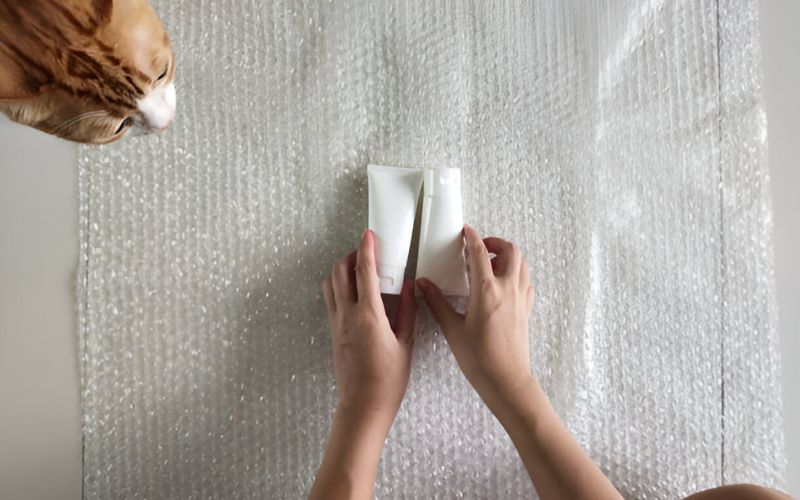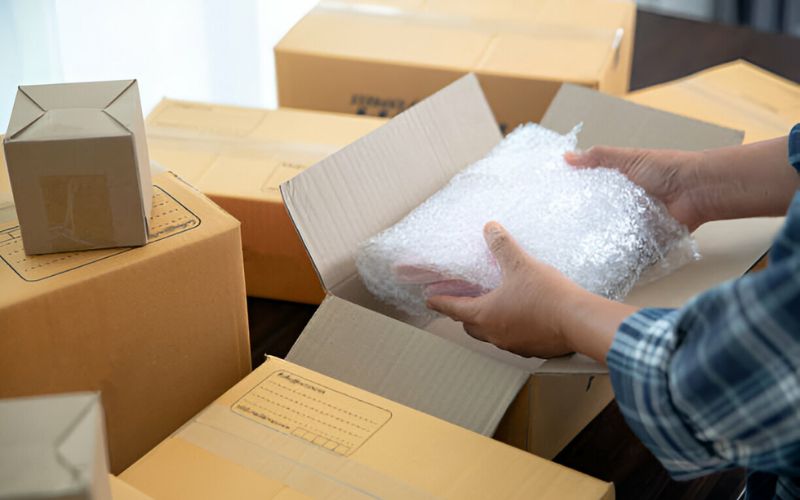Did you know that millions of tons of bubble wrap are used worldwide each year? This fun packaging material not only protects our packages but also provides hours of popping entertainment. However, its widespread use raises important environmental concerns.
Despite its popularity, many people are confused about whether bubble wrap can be recycled. Let’s clear up the confusion and explore sustainable options for bubble packaging.
The Recyclability of Bubble Wrap

A. Yes, Bubble Wrap Can Be Recycled (But with Caveats)
Bubble wrap is typically made from polyethylene plastic, which is recyclable. However, there are some caveats:
- Local Recycling Guidelines: Not all recycling programs accept bubble wrap due to sorting difficulties. It’s essential to check your local recycling guidelines to see if they accept it.
- Special Handling: Some programs require bubble wrap to be taken to specific drop-off locations instead of being included in curbside pickup.
What is Local Recycling Programs?
To find out if your local recycling program accepts bubble wrap:
- Check Online: Visit your community’s recycling website for detailed information.
- Contact Local Facilities: Call or email your local recycling center for clarification.
- Drop-off Locations: If curbside recycling isn’t an option, look for alternative drop-off locations such as grocery stores or special recycling events that accept plastic films.
Repurposing Bubble Wrap

A. Creative Uses for Bubble Wrap (Giving it a Pop!)
Instead of discarding bubble wrap, consider these creative ways to reuse it around the house:
- Packing Material: Reuse bubble wrap to protect fragile items during moves or shipments.
- Insulation: Use it to insulate windows during winter to save on heating costs.
- Plant Protection: Wrap bubble wrap around plant pots to protect them from frost.
- Craft Projects: Get creative and use bubble wrap in various DIY craft projects.
B. Benefits of Repurposing Over Recycling
Repurposing bubble wrap has significant environmental benefits:
- Less Energy Consumption: Reusing materials reduces the energy needed to recycle them.
- Reduced Waste Stream: By finding new uses for bubble wrap, you help keep it out of landfills.
Beyond Bubble Wrap: AKA Sustainable Packaging
Consider these eco-friendly alternatives for packing and shipping:
- Biodegradable Peanuts: Made from natural materials, they decompose easily and are safe for the environment.
- Air Pillows: These are often made from recycled materials and can be deflated and recycled again.
- Recycled Paper Cushioning: An excellent alternative that is both recyclable and biodegradable.
The trend toward sustainable packaging is growing, and adopting these options can significantly reduce our environmental impact.
Now its your Turn!
bubble wrap can be recycled, but it requires careful consideration of local guidelines. Repurposing bubble wrap is often a better option environmentally, as it reduces energy consumption and waste. Exploring sustainable packaging alternatives can further help reduce our environmental footprint.
We’d love to hear from you! Share your experiences with recycling and repurposing bubble wrap in the comments below. For more information, check out resources on finding local recycling programs and sustainable packaging options. Let’s work together to make a positive environmental impact.
Commonly Asked Questions
What type of bubble wrap is recyclable?
Most bubble wrap is made from low-density polyethylene (LDPE), which is a recyclable material. To recycle bubble wrap:
- Check Local Guidelines: Ensure your local recycling program accepts LDPE plastics. Not all curbside programs do.
- Look for Drop-off Locations: Many grocery stores and recycling centers have specific bins for plastic films, including bubble wrap.
- Clean and Dry: Make sure the bubble wrap is clean and dry before recycling it to avoid contamination.
Is bubble wrap biodegradable?
No, traditional bubble wrap is not biodegradable. It is made from plastic, which can take hundreds of years to break down in landfills. However, there are biodegradable alternatives available, made from plant-based materials, which decompose much faster and are more environmentally friendly.
Are there any downsides to repurposing bubble wrap?
While repurposing bubble wrap is a great way to extend its life and reduce waste, there are a few considerations:
- Limited Uses: Bubble wrap can degrade over time and lose its protective qualities, limiting how often it can be reused effectively.
- Storage Space: Keeping bubble wrap for future use can take up storage space.
- Environmental Impact: Although repurposing is beneficial, it doesn’t eliminate the environmental impact of producing and eventually disposing of the plastic.
Is bubble wrap a good insulator?
Yes, bubble wrap is an effective insulator. Its air-filled bubbles provide a layer of insulation that can help:
- Windows: Use bubble wrap to insulate windows in winter, reducing heat loss and saving on heating costs.
- Plants: Protect plants from frost by wrapping bubble wrap around pots.
- Packaging: It continues to be an excellent material for insulating and protecting items during shipping.

